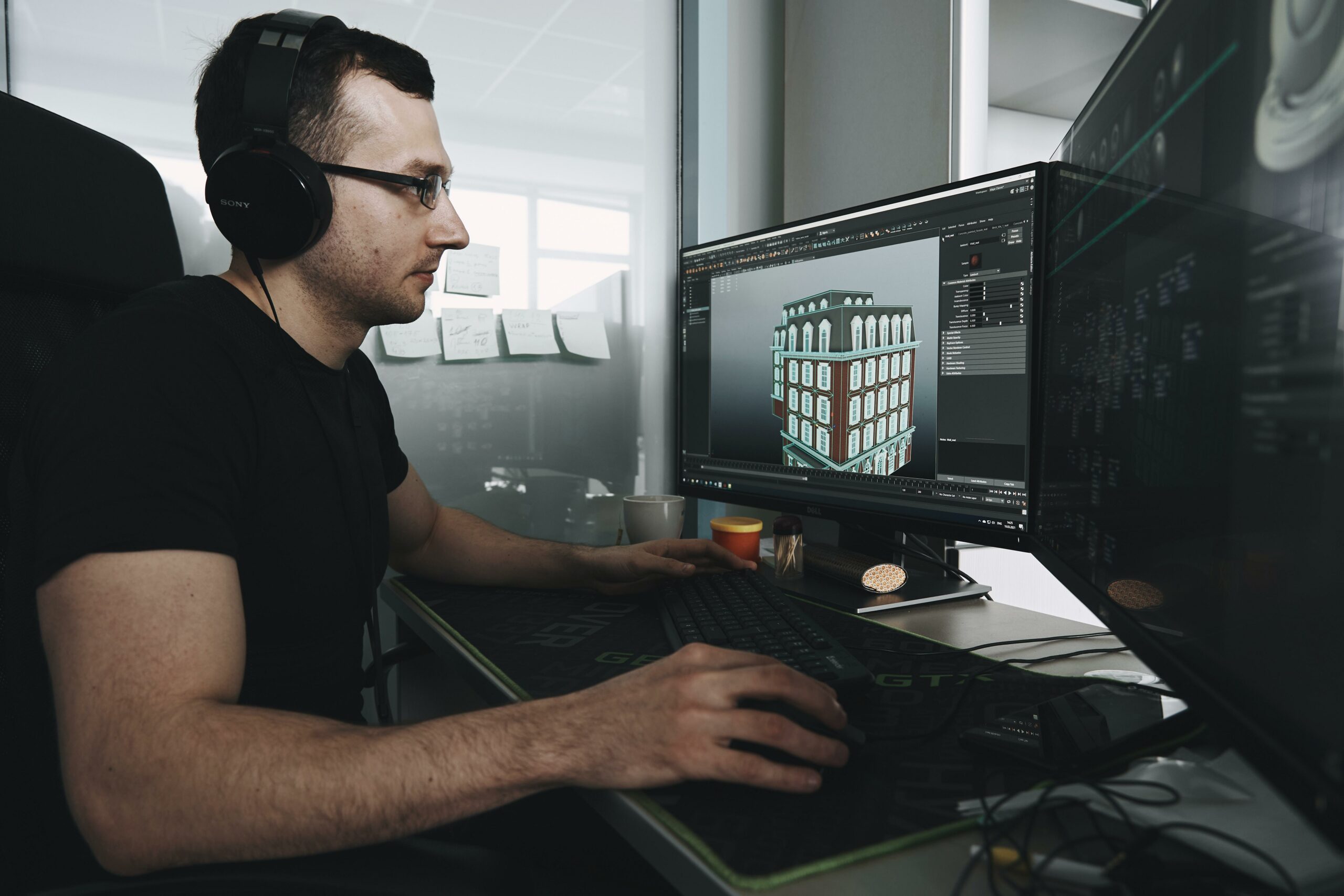Are you ready to dive into the mesmerizing world of 3D animation? Get ready to be blown away by captivating facts, expert insights, and intriguing discoveries that will leave you with a whole new appreciation for this innovative art form. In this article, we will explore the fascinating realm of 3D animation, uncovering the secrets behind lifelike character movements, breathtaking visual effects, and the cutting-edge software that brings imagination to life. Whether you’re a fan of animated movies, video games, or virtual reality experiences, prepare to be amazed as we unveil the captivating realm of 3D animation facts. Let’s get started on this thrilling journey into a world where creativity knows no bounds!

3D Animation Facts
Have you ever wondered how those captivating animated movies and TV shows come to life? Well, let me take you behind the scenes of the mesmerizing world of 3D animation and unveil some fascinating facts that will blow your mind. From the intricacies of character animation to the evolution of this remarkable art form, get ready to discover the essence of 3D animation and why it continues to captivate audiences worldwide.
1. The Magic of Virtual Skeletons:
When it comes to 3D animation, the key to bringing characters and objects to life lies in the virtual skeletons. These virtual skeletons, also known as rigs, provide the framework upon which the 3D models are built. Just like how our bones support our bodies, rigs enable animators to manipulate the characters and objects, giving them realistic movements and expressions. This interactive process allows animators to breathe life into their creations while ensuring smooth and fluid animations that can astound viewers with their lifelike qualities.
2. Frame by Frame:
Ever wondered how animators achieve that seamless motion in 3D animations? Well, it’s all about the frames. Animations are created by drawing a series of pictures, also known as frames, at a rapid pace. To achieve smooth motion, the industry standard is around 12 frames per second or faster. This attention to detail and precision in frame creation allows each movement to seamlessly flow into the next, creating an illusion of realistic and captivating motion that keeps us glued to the screen.
3. Bringing Characters to Life:
One of the main applications of 3D animation lies in character animation for movies and TV shows. Through the power of 3D animation, characters come to life, appearing more lifelike and engaging than ever. This lifelike quality is achieved through meticulous attention to detail in every aspect of the character’s design, from their appearance and movement to their expressions and emotions. By harnessing the power of 3D animation, animators can breathe life into these characters, making them relatable and captivating for audiences of all ages.
4. Molding Virtual Clay:
Creating 3D models is no easy task. It involves using modeling tools to shape and refine simple objects or geometric figures into the desired characters, objects, or settings. It’s like an artist sculpting a perfect statue from a block of clay, except in the digital realm. These modeling tools provide animators with the ability to create intricate details, add textures, and refine the shape of the models until they are ready to be brought to life through the animation process.
5. Unveiling the Virtual Skeleton:
As mentioned earlier, the animation process involves creating a virtual skeleton or rig that outlines the character or object being designed. This virtual skeleton serves as a blueprint, allowing animators to define the movements, proportions, and interactions of the 3D models. Just like how our bones give us structure and enable us to move, the virtual skeleton acts as the foundation that animators build upon to bring their creations to life. It’s the backbone of the animation process, ensuring that animations flow naturally and convincingly.
6. Beyond the Flat Screen:
While traditional 2D animation is created using drawings and illustrations, 3D animation takes it a step further by creating a realistic image using three dimensions. By utilizing computer software, animators can create intricate motions, perspectives, and depth that go beyond what is possible in 2D animation. The result? A visually stunning experience that immerses audiences in a world where the boundaries of reality are pushed and possibilities are infinite.
7. Pioneering Animators:
Did you know that the first successful animated film was “The Adventures of Padre Pio,” created by Georges Méliès? This groundbreaking film, released in 1912, showcased the potential of animation and set the stage for the future of this mesmerizing art form. From this humble beginning, 3D animation has come a long way, evolving into the visually stunning masterpieces we see today.
8. Luxo Junior’s Name:
Do you remember the iconic lamp from Pixar’s opening sequence? Well, believe it or not, that adorable lamp has a name. Its name is Luxo Junior, and it has become an iconic symbol of Pixar’s ingenuity and creativity. This lovable lamp has captured the hearts of millions and serves as a testament to the incredible storytelling potential of 3D animation.
9. Walt Disney’s Pitch:
When Walt Disney first pitched his innovative idea for an animated film, he didn’t present it to just anyone. He pitched it to Louis Mayer, the head of Metro Goldwyn Mayer (MGM). This bold move showcases Disney’s determination to revolutionize the world of animation and his understanding of the grandeur that 3D animation could bring to the silver screen. It’s through this relentless pursuit of his passion that Disney laid the foundation for the remarkable animation industry we know today.
10. The “Toy” that Changed it All:
In 1995, “Toy Story” made history as the first feature-length film fully created with the help of 3D animation. This groundbreaking film revolutionized the industry, seamlessly blending captivating storytelling with cutting-edge technology. “Toy Story” marked the beginning of a new era in animated filmmaking, sparking a wave of creativity and innovation that continues to shape the world of animation today.
As you can see, the world of 3D animation is filled with endless possibilities and fascinating facts. From the virtual skeletons that give life to our favorite characters to the evolution of animation as an art form, each fact unravels a captivating facet of this mesmerizing field. So, the next time you watch an animated movie or TV show, take a moment to appreciate the intricate craftsmanship and dedication that goes into every frame. It’s a world where imagination knows no bounds, and dreams are brought to life through the remarkable art of 3D animation.
In the words of Walt Disney himself: “Animation offers a medium of storytelling and visual entertainment which can bring pleasure and information to people of all ages everywhere in the world.”
Animation is a fascinating art form that captures our imagination and brings stories to life. If you’ve ever wondered about the behind-the-scenes magic that goes into creating animated films and shows, you’ll be delighted to learn some interesting facts about animation. From the early days of hand-drawn cel animation to the modern techniques of computer-generated imagery (CGI), animation has come a long way. So, if you’re ready to dive into the enchanting world of animation, click here to explore some captivating facts about animation: facts about animation.
3D Animation Facts
Are you curious about the latest advancements in 3D animation techniques? Look no further! In our article, we delve into the fascinating world of 3D animation and explore cutting-edge methods for bringing characters and objects to life. From character rigging to texturing and rendering, we cover it all. Discover the industry trends in 3D animation that are shaping the future of this creative field. Uncover the secrets behind the art of visual storytelling in 3D animation and learn how to captivate audiences with your next animated masterpiece. Explore the possibilities and unleash your creativity with 3D animation. Click here to learn more about the ever-evolving world of 3D animation techniques: 3D animation techniques. Stay ahead of the curve and gain valuable insights into industry trends in 3D animation: industry trends in 3D animation. Dive deep into the art of visual storytelling in 3D animation and master the techniques that will make your creations truly unforgettable: art of visual storytelling in 3D animation.
Why Onions Make You Cry: The Science Behind It
[youtube v=”rcBjJcD_7iU”]
We’ve all experienced it – the tears streaming down our faces while cutting onions. But have you ever wondered why this happens? In this article, we’ll delve into the science behind why onions make you cry.
Onions, as we know, start as seedlings and grow into fully mature bulbs. During this process, onions absorb sulfur, a non-metallic chemical element, from the ground. Over time, this sulfur transforms into amino acid sulfoxides. These sulfoxides are responsible for the unique flavor of onions that we all love.
When you cut an onion, you’ll notice a thin, oily substance on its inner surface. This substance contains the amino acid sulfoxides we mentioned earlier. Inside the onion cells, there is an enzyme called lachrymatory-factor synthase. When the onion cells are cut, this enzyme is released into the air.
The real culprit behind our tears is a chemical called syn-propanethial-S-oxide. This chemical is formed when the lachrymatory-factor synthase enzyme reacts with the amino acid sulfoxides. As soon as this chemical comes into contact with our eyes, it triggers a response from our brain to protect our eyes from any potential harm.
Our brain signals the lacrimal glands, located above our eyes, to release tears that wash away the syn-propanethial-S-oxide. This chemical irritant is then flushed out, causing us to shed tears in the process.
So, why do onions contain these tear-inducing chemicals in the first place? Scientists believe that these chemicals serve as a defense mechanism for onions against pests and herbivores. Just as onions protect themselves, it’s crucial for us to take measures to protect ourselves from online threats.
When accessing websites using public or weak password WiFi connections, our data can be vulnerable to hackers. However, using a VPN like NordVPN can help safeguard our information. NordVPN creates an encrypted tunnel around our data and connects it to a server, making it difficult for hackers to steal our sensitive details.
In conclusion, the tears we shed while cutting onions are a natural defense mechanism to protect our eyes from the chemicals released by the onion cells. Next time you find yourself crying over onions, remember the fascinating science behind it. And don’t forget to prioritize your own online security by using a reliable VPN service like NordVPN.
“The tears we shed while cutting onions are a natural defense mechanism to protect our eyes from the chemicals released by the onion cells.”
“Next time you find yourself crying over onions, remember the fascinating science behind it. And don’t forget to prioritize your own online security by using a reliable VPN service like NordVPN.”
FAQ
- Question: What is 3D animation?
Answer: 3D animation involves building objects and characters on a computer monitor and rigging them with a virtual skeleton, creating lifelike movements and captivating visuals.
Question: How is the illusion of motion created in animations?
Answer: The illusion of smooth motion in animations is created by drawing pictures at around 12 frames per second or faster.
Question: What is the use of 3D animation in TV shows and movies?
Answer: 3D animation is often used for character animation in TV shows and movies, making characters appear more lifelike and engaging.
Question: How are 3D models created?
Answer: 3D models are created using modeling tools, which shape and refine simple objects into desired figures.
Question: What is the process of 3D animation?
- Answer: The process of 3D animation involves creating a virtual skeleton or rig to outline the character or shape being designed, bringing it to life with realistic movements and dimensions.
“`
“`
















